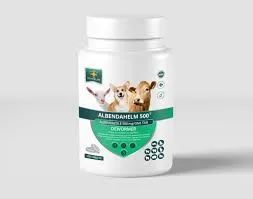- Afrikaans
- Albanian
- Amharic
- Arabic
- Armenian
- Azerbaijani
- Basque
- Belarusian
- Bengali
- Bosnian
- Bulgarian
- Catalan
- Cebuano
- Corsican
- Croatian
- Czech
- Danish
- Dutch
- English
- Esperanto
- Estonian
- Finnish
- French
- Frisian
- Galician
- Georgian
- German
- Greek
- Gujarati
- Haitian Creole
- hausa
- hawaiian
- Hebrew
- Hindi
- Miao
- Hungarian
- Icelandic
- igbo
- Indonesian
- irish
- Italian
- Japanese
- Javanese
- Kannada
- kazakh
- Khmer
- Rwandese
- Korean
- Kurdish
- Kyrgyz
- Lao
- Latin
- Latvian
- Lithuanian
- Luxembourgish
- Macedonian
- Malgashi
- Malay
- Malayalam
- Maltese
- Maori
- Marathi
- Mongolian
- Myanmar
- Nepali
- Norwegian
- Norwegian
- Occitan
- Pashto
- Persian
- Polish
- Portuguese
- Punjabi
- Romanian
- Russian
- Samoan
- Scottish Gaelic
- Serbian
- Sesotho
- Shona
- Sindhi
- Sinhala
- Slovak
- Slovenian
- Somali
- Spanish
- Sundanese
- Swahili
- Swedish
- Tagalog
- Tajik
- Tamil
- Tatar
- Telugu
- Thai
- Turkish
- Turkmen
- Ukrainian
- Urdu
- Uighur
- Uzbek
- Vietnamese
- Welsh
- Bantu
- Yiddish
- Yoruba
- Zulu
Dec . 15, 2024 13:57 Back to list
veterinary disinfectant comparison
A Comparative Analysis of Veterinary Disinfectants
In the veterinary field, hygiene and sanitation play a critical role in the prevention of disease transmission among animals. With the increasing prevalence of infectious diseases, the proper choice and use of disinfectants have become paramount. This article aims to compare various veterinary disinfectants, focusing on their effectiveness, application methods, and safety concerns.
Importance of Disinfection in Veterinary Practices
Disinfectants are agents applied to surfaces, instruments, and areas where animals are housed or treated to eliminate or reduce pathogenic microorganisms. In veterinary practices, maintaining a sterile environment not only protects animal health but also safeguards human health, especially when handling zoonotic diseases. Effective disinfection can significantly lower the risk of outbreaks and ensure the overall well-being of both animals and staff.
Types of Veterinary Disinfectants
Veterinary disinfectants can be categorized into several classes based on their active ingredients, including quaternary ammonium compounds (quats), phenols, chlorine compounds, and hydrogen peroxide. Each type has its own set of advantages and disadvantages, which are critical to consider during application.
1. Quaternary Ammonium Compounds (Quats)
Quats are widely used in veterinary settings due to their broad-spectrum efficacy against bacteria, viruses, and fungi. Products containing quaternary ammonium compounds are known for their low toxicity and pleasant odor, making them suitable for frequent use. However, they generally lack effectiveness against spores and certain resistant pathogens. Moreover, quats can lose their efficacy in the presence of organic matter, necessitating thorough pre-cleaning before application.
2. Phenols
Phenolic disinfectants are highly effective against a range of microorganisms, including bacteria and viruses. They are often used in high-burden areas, such as kennels and animal hospitals, due to their residual activity. However, phenols can be harsh on surfaces and may pose health risks to both animals and humans if not used properly. Their strong odor and potential for skin and respiratory irritation limit their use in some settings.
veterinary disinfectant comparison

3. Chlorine Compounds
Sodium hypochlorite (bleach) is a common chlorine compound used in veterinary disinfection. Its broad-spectrum antimicrobial activity makes it effective against bacteria, viruses, and fungi. Additionally, chlorine compounds are relatively inexpensive. Nevertheless, the corrosive nature of bleach can damage surfaces, and it may become ineffective in the presence of organic matter. Moreover, toxic fumes generated when mixed with ammonia can pose health risks.
4. Hydrogen Peroxide
Hydrogen peroxide is another effective disinfectant known for its ability to kill bacteria, viruses, and spores. It breaks down into water and oxygen, making it environmentally friendly. Hydrogen peroxide can be applied efficiently in various concentrations, and its effectiveness is maintained in the presence of organic matter. However, higher concentrations can be corrosive to certain materials, making careful handling essential.
Application Methods
The application method of disinfectants is as crucial as the choice of product itself. Common methods include spraying, wiping, or soaking, depending on the type of surface and level of contamination. It is essential to follow the manufacturer's instructions regarding dilution, contact time, and safety measures to achieve the desired disinfection level.
Safety Concerns
When using veterinary disinfectants, safety must be a priority. It is crucial to wear appropriate personal protective equipment (PPE), such as gloves, masks, and goggles, to minimize exposure. Staff training on the proper handling and application of disinfectants can prevent accidents and ensure effective use. Moreover, environmental considerations, such as the effects of chemical runoff on local wildlife, should also guide the selection of disinfectants.
Conclusion
Choosing the right veterinary disinfectant is essential for maintaining a safe and hygienic environment in veterinary practices. While quaternary ammonium compounds, phenols, chlorine compounds, and hydrogen peroxide each have their own merits and limitations, understanding their specific applications and safety concerns is critical for effective disinfection. By carefully selecting the appropriate disinfectant and adhering to proper application guidelines, veterinary professionals can significantly reduce the risk of disease transmission and promote the health and well-being of animals in their care.
-
Guide to Oxytetracycline Injection
NewsMar.27,2025
-
Guide to Colistin Sulphate
NewsMar.27,2025
-
Gentamicin Sulfate: Uses, Price, And Key Information
NewsMar.27,2025
-
Enrofloxacin Injection: Uses, Price, And Supplier Information
NewsMar.27,2025
-
Dexamethasone Sodium Phosphate Injection: Uses, Price, And Key Information
NewsMar.27,2025
-
Albendazole Tablet: Uses, Dosage, Cost, And Key Information
NewsMar.27,2025













